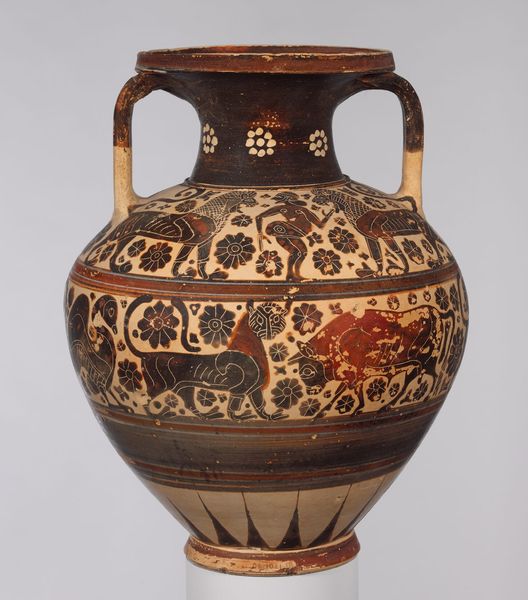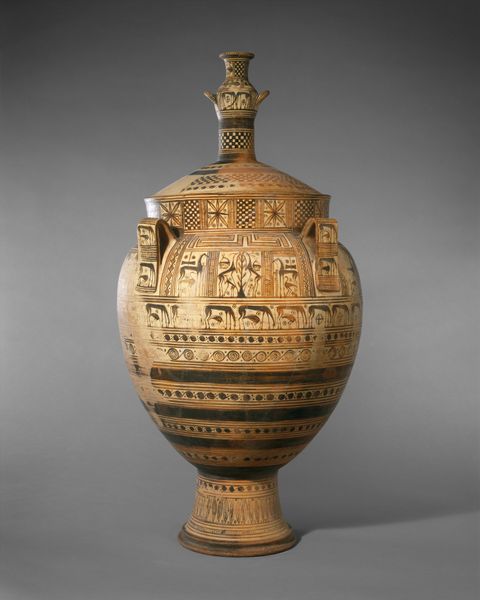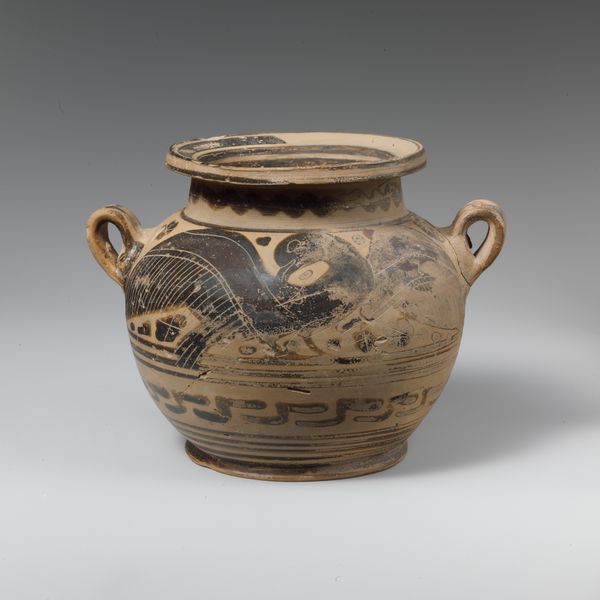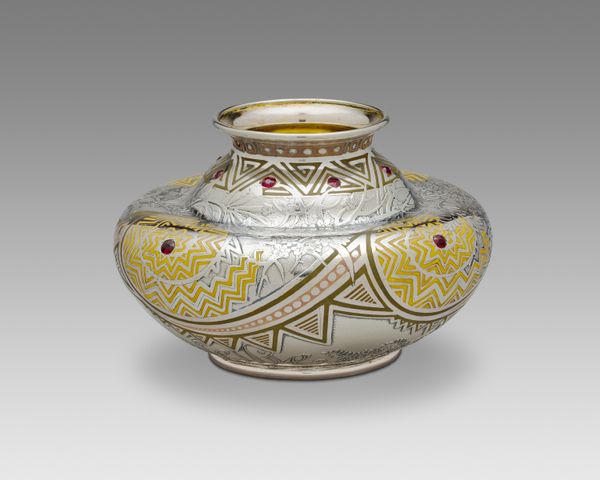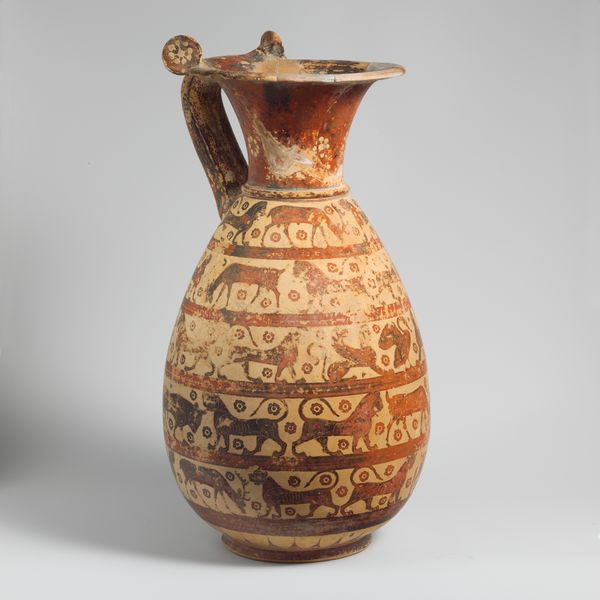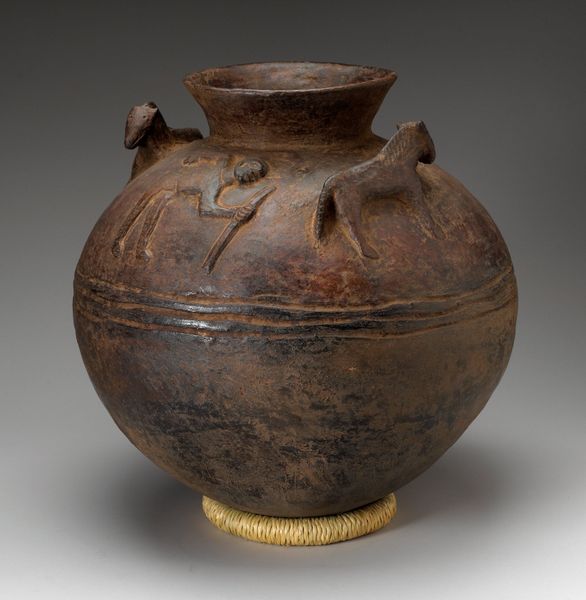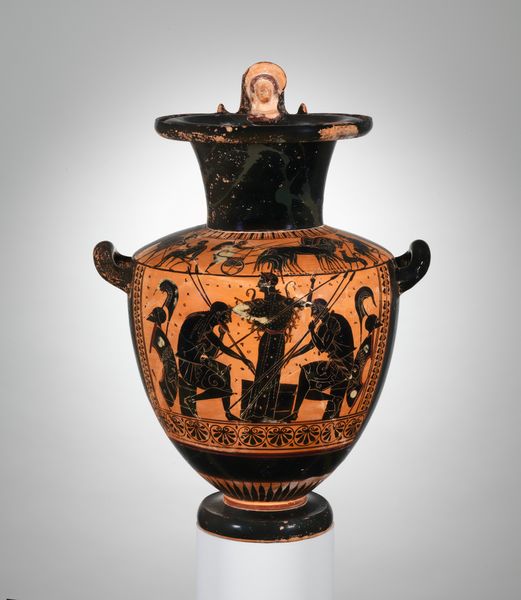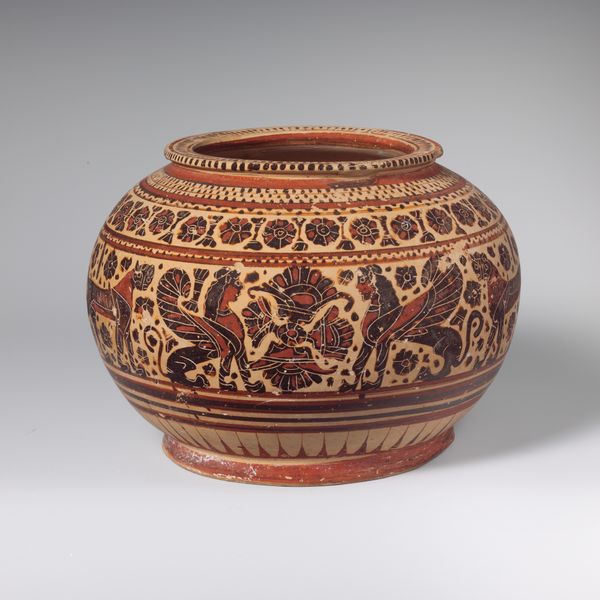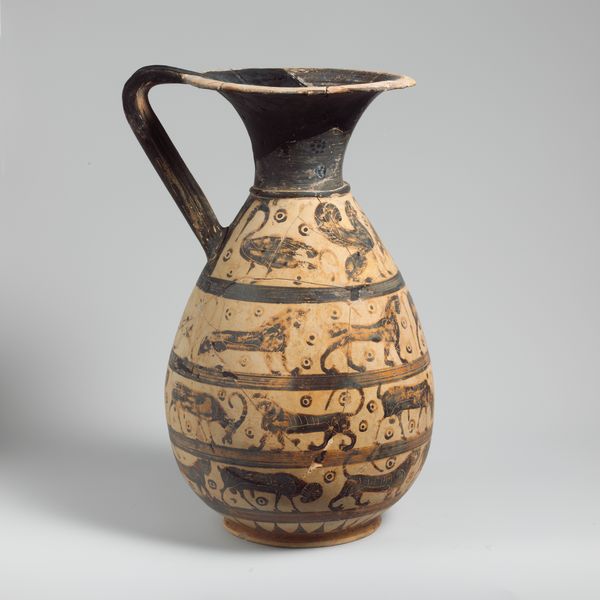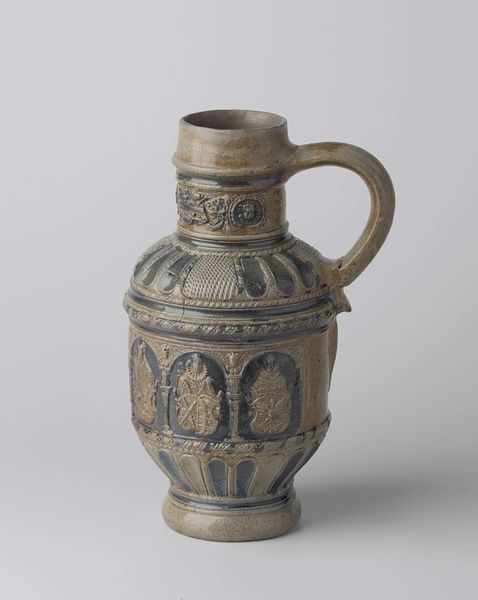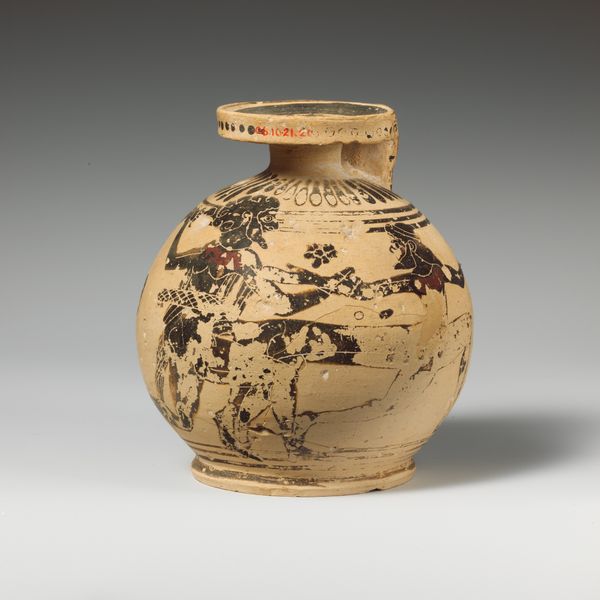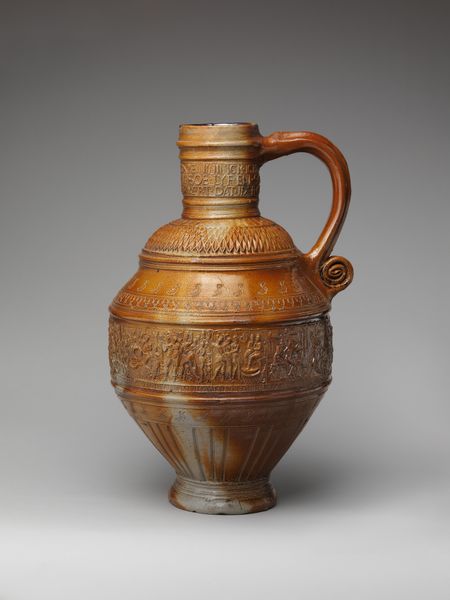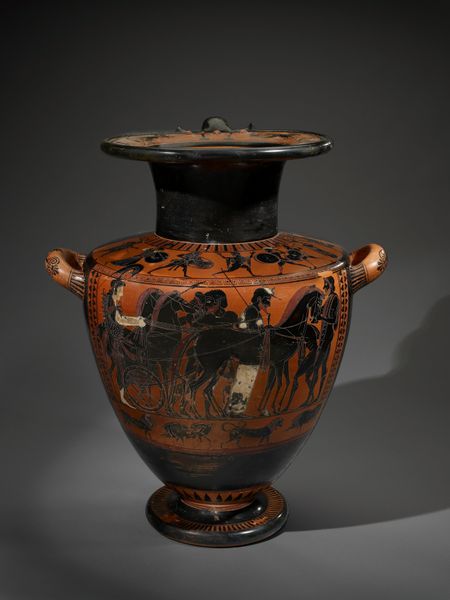
ceramic, earthenware
#
pottery
#
greek-and-roman-art
#
ceramic
#
vessel
#
earthenware
#
ancient-mediterranean
#
ceramic
#
mythology
#
earthenware
#
decorative-art
Dimensions: 14 × 15 × 15 cm (5 1/2 × 5 7/8 × 5 7/8 in.)
Copyright: Public Domain
Editor: So, here we have an earthenware pyxis, a container for personal objects, made around 580 BC. The artistry is impressive, especially considering it's essentially a functional object. What can we glean from how it was crafted and used? Curator: Let’s start with the material itself: humble earthenware, yet elevated through skilled handcraft. Notice how the process of creation, the potter's labor, transformed raw clay into something that held value, both practical and possibly symbolic. Editor: Right, so the choice of materials and the making process matter. How would it have been valued back then, and who would have used it? Curator: Consider the social context: this pyxis likely wasn't for everyday storage by the common person. Its intricate decorations suggest a more privileged owner, someone for whom these mythological scenes – the very act of owning such a vessel – carried significance beyond simple utility. Who had the power to commission and own these crafted items and how did that affect social structures? Editor: It makes me think about the economy of the time – the trade routes, access to materials, and the social hierarchy reflected in this one ceramic pot. The decorations must have been important, too, if they took this much effort on an item with a specific, mundane, use case. Curator: Precisely. This challenges our notion of ‘high art’ versus ‘craft’. Was the maker considered an artist, a skilled laborer, or something in between? Exploring the labor involved and how society valued it reveals much about ancient Greek culture. Editor: That's fascinating. I hadn't thought about it in terms of the maker's social standing or the economic factors involved in creating and possessing it. It brings a new dimension to appreciating the piece. Curator: Absolutely. By looking at the materials, labor, and consumption, we can deconstruct the established narratives around ancient art and understand the broader social structures.
Comments
No comments
Be the first to comment and join the conversation on the ultimate creative platform.

